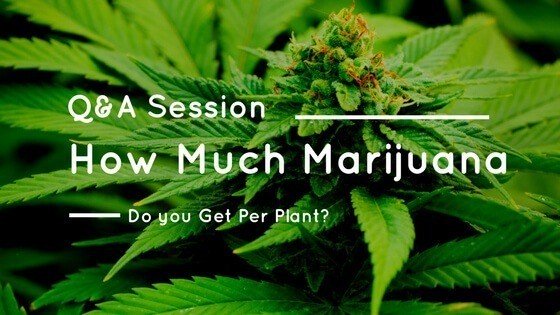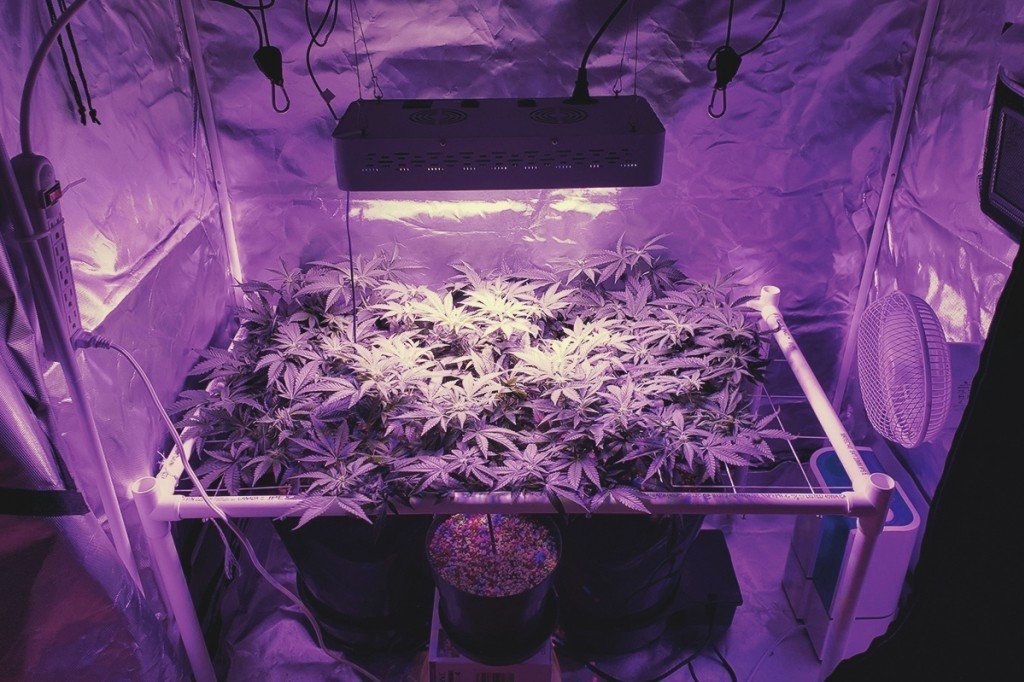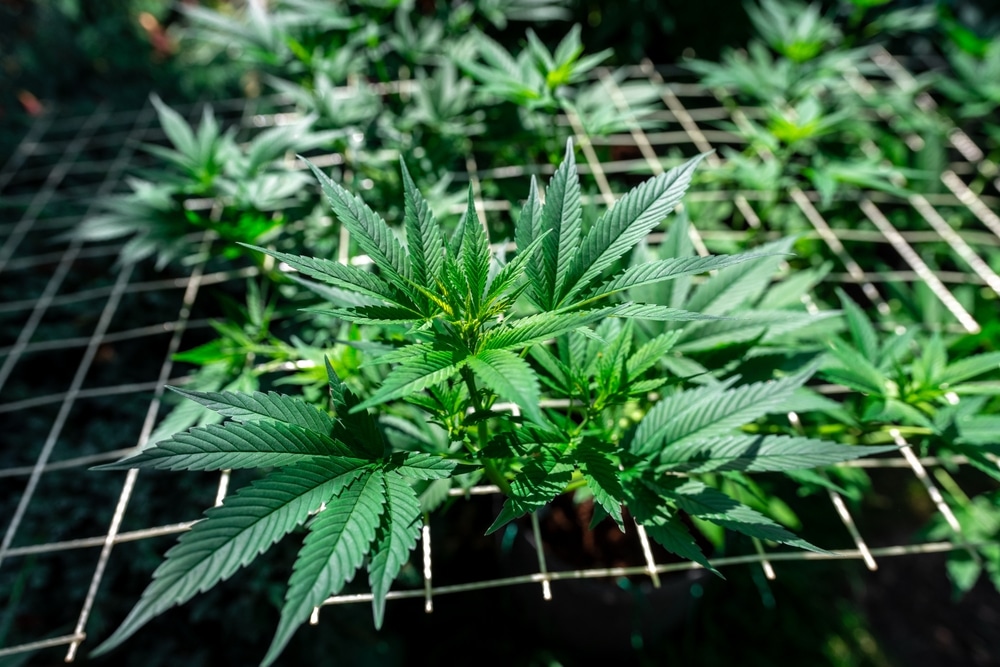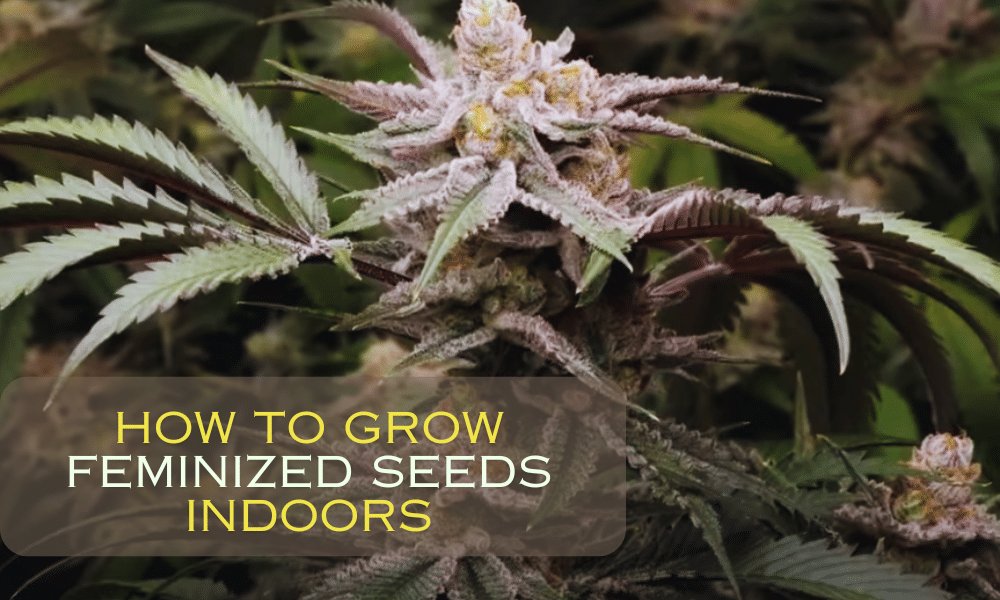No products in the cart.
Marijuana Education
How Much Weed Does One Plant Produce
If you are a beginner growing marijuana, you have probably wondered, how much weed does one plant produce?
One plant will produce approximately 907.2 grams (32oz) of wet marijuana.
and about 181.4 grams (6.4oz) of dried marijuana.
Still, the performance of each plant will be different. You can get a very small harvest or a very large one. Various factors can influence the amount of production when growing marijuana, factors such as its genetics and its proper process can lead to a successful harvest. Our article below will explain our common question, how much weed does one plant produce.
How to estimate weed yield?
There are two ways to boost performance:
- By the impact of grow lights
- By cubic meters
1. By the impact of grow lights
This first way of obtaining yield is to measure it in relation to the impact or strength of the grow lights. Its calculation is very simple. First, calculate the total weight of the dry herb in grams (wet herb tends to lose weight as it dries). Then divide that weight by the wattage of the bulb. Here is an example of how to do it:
Dry Herb Weight in Grams / Watts of Bulb Power = Yield Size per Watt
Note: If you are using more than one bulb, add up all of their watts. For example, if you have two 200W bulbs you have 400W.
If you have a total of 150 grams of marijuana. Its calculation would be the following:
(Following the formula above)
150 g / 400 W = .375 G /
2. By cubic meters
Because of the size of its container, growers can also get their performance. First, you have to
calculate the volume of the container. Multiply the diameter of its surface by the diameter of its bottom. Then multiply the result by the vertical height. Divide the weight of the dried herb by the cubic feet of the container. Something like that:
Total weight of dry herb in grams / cubic feet of container = size of yield per cubic meter
Example: You have a 200 gram plant and your container is .60 cubic meters. Would:
200g / .60 cubic meters = 333.33g / cubic meters.
Factors that determine how much weed does one plant produce
Some factors come into play when it comes to marijuana performance, including:
- Prior knowledge
- Fertilizers
- Duration of the vegetation stage
- If it grows in open fields or pots
- Light
- Indoors / outdoors
- Genetic quality
Prior knowledge
When the plant reaches the vegetative stage, growers have to know what process to carry out, that is why it is important to have prior knowledge about it. This is formed by a set of techniques to obtain a higher production, physically altering the plant.
These techniques can be applied like this: bending and securing, damaging or removing, and manipulating the timelines. They can also be divided into individual categories, such as:
- Screen of Green (ScrOG) is a method where the grower makes or places a kind of “screen” or mesh over the plant. It consists of weaving the stems through the mesh as the harvest grows. The plant, having a smooth shape, is perfect for obtaining many buds.
- Low stress training (LST), consists of bending the tall stem down and out as the plant grows while the stems become more flexible. The shape of the plant will be flat in shape and thick in width so that many will sprout.
- Supercropping. This method is used or can be used when the stem is very tall and it is difficult to lean. It tends to soften a bit first before curving it.
- Topping, this consists of a way to damage the plant when it is only very young to stimulate the growth of several buds. First, the upper part of the main stem would be removed to form two main stems and make more than one tail grow
- Fimming, is another damage technique that involves shaving the top of the main stem rather than removing it. It may be less stressful to the plant but it is not as likely to sprout as much as the previous one.
- Defoliation. This means removing the largest leaves from the plant. It is usually done during the first 4 weeks of flowering. This process encourages the buds to get bigger but should be done really carefully, especially when defoliating autoflowers.
People who grow marijuana often use several of these techniques
Fertilizers
The main function of fertilizers is to provide the necessary nutrients to the soil, especially if a plant lacks a specific nutrient. People who grow outdoors have the possibility of adding powdered fertilizer to make the cultivation easier to transport, however some prefer not to do so, since some strains can even burn too much to completely damage the marijuana plant.
It is until the vegetative stage that you have to wait to add fertilizer, as it can cause damage. Still they can play an important role in correcting nutrient deficiencies, thus allowing better growth.
There are organic fertilizers that help the aroma feel more, but if we talk about size and yield better, for this are mineral fertilizers and additional nitrogen and phosphorus can be added (helps with the growth of buds), the disadvantage of mineral fertilizer is that it leaves a not very exquisite flavor when consuming the plant, although it is advised that washing and cleaning the roots about two weeks before harvesting can reduce this strange taste.
Duration of the vegetation stage
As we know, the whole process of a marijuana plant has its stages and the penultimate stage is the vegetative phase, which is where the stems and leaves come out. The vegetative stage can last from 3 to 16 weeks, the growth of the plant begins in the first two weeks, it matures until its gender can be seen. The three essential things that every plant needs are: a lot of air, water and nutrients.
This phase requires more monitoring since the flowering stage appears here, to obtain the maximum performance it is the most necessary stage. If your plant is large and healthy it means that they can get more out of their harvest, for reasons the vegetative stage has so much to do with the yield of the grass.
Nitrogen is one of the essential nutrients that is given to the plant in its vegetative stage, since it helps with the growth of stems and leaves, the size and health also depend on whether it is grown indoors or outdoors, among other factors…
If it grows in open fields or pots
Some people grow their marijuana in pots or containers and others on the ground, that is, on the ground. These two ways can have an effect on the amount that can be obtained at the end of the harvest. In pots, mobility is one of its great advantages, and you can also have more control of the health of the plant.
The container can be filled with the type of soil that contains the necessary nutrients, helping the plant to grow larger. Now, the size of the pot also influences the larger, the more space for the plant.
If you opt for the option of growing it in the ground, you can maximize the yield and that the pots restrict the size of the plant, but the soil offers more space and ease for the roots to expand.
Being outdoors, the climate can make the plant sensitive, but in general if your goal is to generate a large plant, soil is recommended instead of containers.
Light
It is no secret to anyone that light is the factor that can distort the amount of harvest that is obtained. Too little or too much can make development difficult. Light works with different factors to feed the crop. As you turn up the intensity, you can positively affect and see better results.
The growth, metabolism and morphology of the plant depend on the quality of light that is used. By using red and blue light they improve the performance and the concentrated amount of THC, for this many people use LED lamps, since they save energy and help with the results.
When we talk about natural light, that is, from the sun, it means that the possibilities are enhanced for a high final performance. It is recommended 10 to 12 hours a day, if a couple of hours more could positively affect the harvest.
The period of light also plays a role in the size of the plant, the plant should not receive less than 5 hours of natural light or artificial light. Darkness also plays an important role as it helps you decide between being in the vegetative stage or moving on to flowering.
The plant, receiving its 12 hours of light and dark, will flower when she decides, it just takes some time.
Indoors / Outdoors
The interiors and exteriors possess positive qualities for a successful performance. Growing the plant outdoors almost guarantees its full growth, so the exact moment must be taken from when it is sown. It is advisable to start in early spring as it can give you enough time to go through each stage. Outdoors, plants have more space and time to grow. Even so, the plants will always depend on the climate and even the animals.
By growing indoors, these types of risks of crop destruction are reduced, you have more control of light, temperature, humidity and carbon dioxide levels, in addition to the fact that the buds are produced with a high quality and have several harvests. per year, unlike abroad. The only limitation is space, yet the two ways affect size and performance in different ways and knowing each one, only you will know what works best for you.
Genetic quality
The traits that the plant acquires throughout its process is thanks to the genetic quality of the seed, traits that in the long run can negatively affect the production of the plant. There are three main types of plants: sativa, Indica, and ruderalis. Most always opt for the first two, but the sativa type is better when it comes to size.
There is also the creation of hybrid plants that can have attributes such as increasing the aroma and maximizing their yields, for this it is better to opt for feminized seed options than for auto flowering ones. As their word says, they are feminized seeds, that is, without a masculine gender. Feminized seeds save labor and fewer crops are lost, although they can suffer from environmental stress. If you are growing feminized plants indoors, genetics influence performance, such as cannabinoids and flavors, which is why female sativa-type plants are the best options for you.
Let’s get growing!
Thanks to this article and now that you have more knowledge on how much and how a cannabis plant will produce successfully, you can choose to start growing. The process can be tedious but the results are impressive!
If you want to know and learn more about the cultivation of marijuana plants, you can consult the online seed section so that you can choose, buy and enjoy the best one that suits you.






